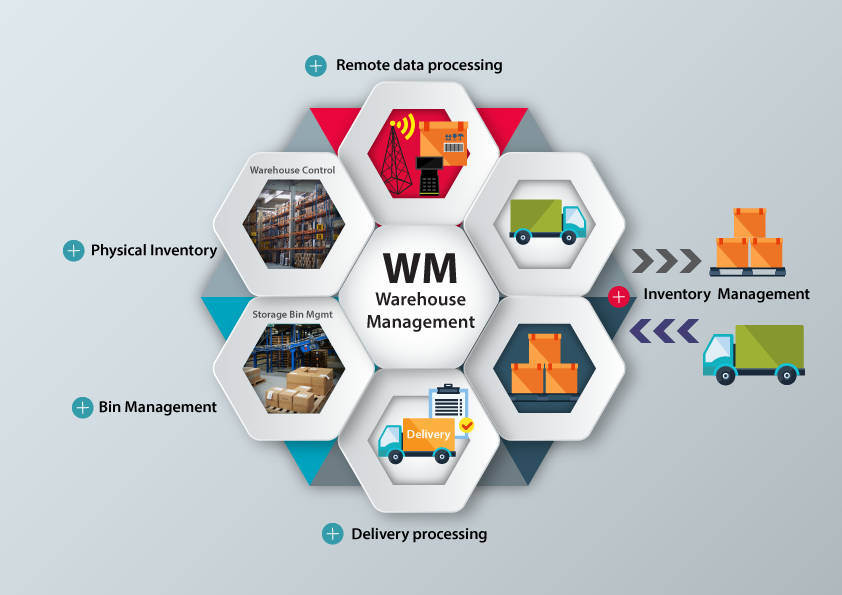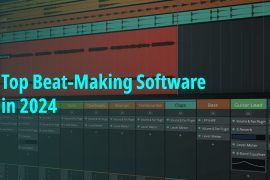Oil and gas firms require project management software to maximize resources and track milestones for capital investments, growth into new markets, or big exploration and production activities due to the complexity of their operations. Oil and Gas Project Management Software can also be used to control the risks that come with any project, resulting in cost savings, enhanced productivity, and improved staff safety. This sort of software is used by project managers and their teams to plan, implement, monitor, close, and evaluate oil and gas projects.
For asset installation and maintenance projects, oil and gas project management software can be combined with oil and gas asset management software. To compute, assign, and manage project expenses, this type of software connects with oil and gas back office and accounting solutions.
The increased investments in alternative energy such as wind, solar, tidal, nuclear, and water are providing headwinds to the worldwide oil and gas project management software market. Furthermore, the widening imbalance between demand and supply for oil and gas is serving as a market barrier.
According to Transparency Market Research, the global oil and gas project management software market will grow at a sluggish rate of 3.6 percent from 2017 to 2025, reaching a value of US$ 489.5 million by 2025.
Table of Contents
Key features and benefits of Oil and Gas Project Management Software

- Allow users to collaborate on one or more projects both within and outside.
- Estimate project risks and monitor their change as the project progresses.
- To increase project profitability, plan and optimize resources.
- Inform users and supervisors about events and suggest solutions.
- Ensure that company standards and practices, as well as federal legislation, are followed.
- Deliver a report with data and analytics on project risks, compliance, costs, and profitability.
What are the different types of Oil and Gas Management Software?
Oil and Gas Management Software can be divided into the following sub-categories:
- Oil and Gas Exploration Software
Exploration software locates and assesses resource deposits, as well as their size and accessibility, to decide whether extraction is viable. These tools categorize the dangers and risks associated with extraction. To build the optimal ways for resource extraction and production, the software interfaces with geology, seismic, simulation, and modeling applications.
- Oil and Gas Geology and Seismic Software
Geology and seismic software assess the seismic hazards associated with planned oil and gas extraction and continue to monitor that risk throughout the extraction process. Because extraction activities might cause seismic occurrences, this helps to prevent accidents and operational disturbance.
- Oil and Gas Simulation and Modeling Software
The extent and viability of deposits, extraction, and production operations are determined to use oil and gas simulation and modeling software. The resource reservoirs, prospective equipment utilization, and environmental implications are all depicted in these models. These tools help the users make informed decisions, assess risks, and take security measures.
- Oil and Gas Engineering Software
Engineering software evaluates ways to maximize resource reserves and develops the most efficient extraction and product technologies for for-profit and safety. Engineers engaged in reservoirs, drilling, and production use this program.
- Oil and Gas Production Software
The extraction process is managed by oil and gas production software to maximize resource utilization and profitability. Compatible with different types of reservoirs, extraction methods, and locations. This program promotes compliance with health, safety, and environmental requirements.
- Oil and Gas Asset Management Software
Asset management software for the oil and gas industry keeps track of resources and equipment across many locations. This program is used by managers, field personnel, and maintenance employees to keep track of operations, maximize resource use, and boost productivity.
- Oil and Gas Project Management Software
Oil and gas project management software is designed to meet the industry’s diverse operational needs. It allows users to keep track of exploration and production milestones, allocate resources for capital investment, assist market expansion, and manage project risk. This program is used by project managers to design, coordinate, and analyze assignments.
- Oil and Gas Training Software
Oil and gas training software focuses on worker safety and education while also maximizing the capacity of resources and equipment. This ensures worker safety, reduces downtime due to equipment malfunctions, and boosts production.
- Oil and Gas Back Office Software
Oil and gas back-office software is designed specifically for the oil and gas industry’s specialized accounting and land records management needs. The program keeps track of exploration, extraction, and production costs, as well as revenue from deposits, asset depreciation, and regulatory reporting.
Top 5 Oil and Gas Project Management Software
Aspen PIMS
Aspen Technology, based in Bedford, provides refineries with AspenONE Engineering, a software design aid that focuses on process optimization and cost control.
Features
Linear and non-linear modeling capabilities
The main non-linear characteristic is sequential linear programming (SLP). In addition to generalized non-linear recursion, interaction blending, additive blending, and mixed-integer modeling, Aspen PIMS provides special ordered sets.
Integration with spreadsheet workbooks
The spreadsheet interface makes it simple and efficient to input and maintains model data.
Integration with databases
Microsoft Access, SQL-Server, and Oracle are all easy to integrate with Aspen PIMS.
Sophisticated Microsoft Windows graphical user interface
The user interface provides access to model management, data management, matrix production, solution, and reporting.
Pros
- Aspen PIMS (process industry modeling system) is a robust, user-friendly petroleum downstream value chain solution that helps to optimize the industry’s overall supply chain and profitability.
- As a result of adopting this software, the petroleum corporation can optimize the model that is used to enhance profit, lower operational costs, and evaluate alternative feedstocks.
- This software has linear and nonlinear modeling capabilities, as well as integration with Excel workbooks and databases such as SQL Server.
Cons
Overall, the Aspen PIMS program is extremely good and useful, but new users may have some trouble at first.
Pricing
Aspen PIMS starts from $349 per year. There are various price editions and features available that suit users’ budgets and requirements.
Earthwork Take-offs
Earthwork Take-offs as an oil and gas project management software offers solutions for paving, site work, highway, and pipe, GPS modeling, and graphical reporting. An earthwork takeoff solution with built-in phasing is also available.
Features
3D modeling
Examine 3-dimensional drawings and schematics of worksite elevations, subgrades, and demolition zones.
Labor cost forecasting
Estimate the number of staff hours needed for earthwork services, then manage job-specific pay rates for payroll.
Material and equipment estimating
Calculate material costs using base rates as well as pricing for purchasing or renting specific project equipment.
Estimate to quote conversion
To create customer-facing quotations and proposals, and transfer data from internal task cost estimates into bespoke templates.
Pros
- It’s a fantastic thing to utilize because it’s so powerful.
- This program’s and software’s capabilities appear to be limitless.
- The things users can accomplish with take-off and the precision it affords are incredible.
Cons
The price is a little exorbitant.
Pricing
Take-offs for earthwork start at $470 per year. There are several price editions and features to choose from, depending on the user’s budget and preferences.
Petrofly
Petrofly’s major goal is to provide comprehensive and integrated software solutions at an affordable price. Petrofly’s capabilities go far beyond data collection; they include but are not limited to, production management, accounting, owner relations, artificial intelligence, and bespoke software solutions.
Features
- Management of Compliance
- Job Estimation
- Management of Logistics
- Management of Maintenance
- Management of Projects
- Management of Resources
- Scheduling
Pros
- The best offers the best customer service and can help the users with practically everything they need to know about bookkeeping and royalty payments.
- They can tailor the software to users’ company’s needs and assisted me in setting up and migrating all of my data to their system.
Cons
No dislikes have been expressed yet.
Pricing
Petrofly start at $349 per year. Depending on the user’s budget and interests, there are many price editions and features to pick from.
Schedule Reader
Schedule ReaderTM is a stand-alone program that dynamically displays project data from Oracle® Primavera® P6 ® XER, XML, and XLS schedules, allowing users to easily filter, organize, and share with project stakeholders.
Features
- Management of a Portfolio
- Management of Resources
- Tracking of Time and Expenses
- Dashboard
- Tracking Milestones
- Keeping track of users’ progress
Pros
- Layouts, filters, groups, and bars can all be customized. Organize users’ work environment to boost their productivity.
- Users can use the software to analyze and track project progress, and it even allows for two-way cooperation.
Cons
For the XER and XML schedule data, there are several limitations in the Standard version (View only).
Pricing
Schedule Reader has two payment options, ranging from $349 to $449. There are several price editions and features to choose from, depending on the user’s budget and preferences.
FieldFX
Clients select FieldFX because it’s adaptable, expandable, and allows them to make changes right away—even when they’re offline. By streamlining operations in the field, users can ensure that their revenue stays where it belongs: with their customers. FieldFX makes it simple to manage ongoing accounts, keep track of price changes, and convert quotes into sales. Transforming how oil and gas, industrial, and environmental service organizations handle their mobile field operations.
Features
- Management of Inventory
- Management of Projects
- Management of work orders
- Management of the Equipment
- Management of Compliance
- Signature by e-mail and invoicing and billing
- Contract Administration and scheduling of Facilities
- Management of Maintenance
- Access via user’s mobile device
- Tracking user’s service history
- Management of Logistics and Material Handling
Pros
FieldFX’s implementation has gone off without a hitch. The ability to customize the platform to operate on users’ specific businesses has been invaluable.
Cons
The complete application takes about 2-3 minutes to load once it is logged in.
Conclusion
Oil and gas firms’ projects with highly complicated operations, resource management, capital management, and inventory management, among other things, are increasing demand for worldwide oil and gas project management software. Oil and gas businesses use this extremely sophisticated and efficient software to manage their capital projects.
There are numerous benefits to using oil and gas project management software. They allow businesses to make better use of resources and keep track of project progress. They also assist businesses in identifying risks and ensuring compliance. Furthermore, they assist with analytics and reporting. If you are looking for a similar, kindly connect with us at SaaSworthy.






